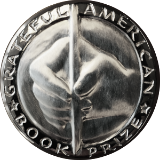April 16 — April 30, 2020
History Matters
Showing our children that their past is prelude to their future

Who doesn’t love a story about the Old West? Particularly, a good, historical depiction about what it was like to domesticate the wild American frontier. Take buffalo hunter, army scout, gunfighter and lawman, Bartholomew “Bat” Masterson. His last shoot out was on the streets of Dodge City, Kansas, on April 16, 1881. Masterson was in Tombstone, Arizona when he received word that his brother, Jim, who also lived in Dodge, was in trouble. Jim had had a falling out with a business partner; gunfire was exchanged, and although Jim was not hurt, he feared for his life, and sent for Bat. Masterson made the 900-mile trip, came to the aid of his brother, and confronted his assailants in a gunfight—that turned out to be his last.
Masterson wasn’t killed, nor were any of the other participants in the skirmish, but when it was over, he decided to give up his “wild bunch” existence and spend the rest of his life practicing less dangerous pursuits.
As the History Channel put it: “the Dodge City shootout and his other exploits ensured Masterson’s lasting fame as an icon of the Old West. He spent the next four decades of his life working as sheriff, operating saloons, and eventually trying his hand as a newspaperman in New York City. The old gunfighter finally died of a heart attack in October 1921 at his desk in New York City.”
The Grateful American Book Prize recommends the very engaging, Bat Masterson: The Man and the Legend by Robert K. DeArment.
****

The Patriots’ anger was blazing, and by April 19, 1775, the British knew it. The colonists wanted to be free and independent of them; at dawn, a detail of 700 British troops set out to capture–and detain–the leaders of the upstart American rebels in Lexington, Massachusetts. Awaiting them were 77 armed minutemen under the command of Captain John Parker.
The American Revolution was begun.
The Grateful American Book Prize recommends The Minute Boys of Lexington by Edward Stratemeyer.
****

The Founding Fathers understood the importance of learning and understanding; education was critical to the success of the new nation. And so, on April 24, 1800, President John Adams signed a bill to provide $5,000 [the equivalent of $102,650 in 2020 dollars] to establish the Library of Congress, an institution which has experienced truly difficult times over the centuries. During the War of 1812, the British burned it—along with its 3,000 volumes, but three years later, Thomas Jefferson, owner of the largest book collection in the country, came to the rescue; for $23,950 he sold 6,487 of his books to the Library, and the institution was re-invigorated.
Another fire in 1851 caused the Library to lose two-thirds of its books; today, it is comprised of three large buildings in Washington, DC, and 110,000,000 books, documents, works of art, and electronic media.
Books–about books– may not seem exciting and engaging, especially for young readers, but the Grateful American Book Prize says John Cole’s America’s Greatest Library: An Illustrated History of the Library of Congress, is full of fascinating facts, images, and little-known stories about the nation’s past.
History Matters is a biweekly feature courtesy of The Grateful American Book Prize.




